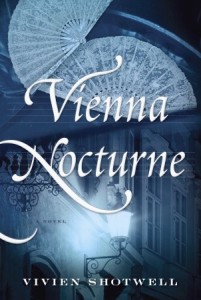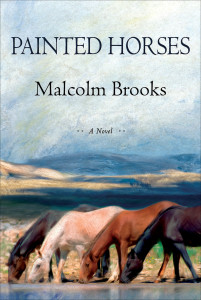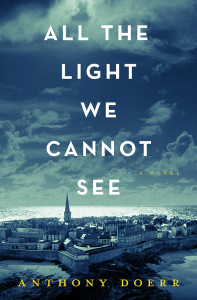 Southern Memories – The enduring power of a passion for reading, writing, friendship, and a “sense of place”: It’s wonderfully fitting that the first book I can’t wait to share that’s outside the historical/contemporary fiction genre Enchanted Prose mostly blogs about is a gorgeous Southern memoir by the “Bard of Tuscany” whose madly in love with prose. You don’t even need Frances Mayes to say she “loves imagery, I will practice writing as though I were painting.” Her writing is so sensory and poetic you’re likely to find yourself, as I did, re-reading sentences over twice, three times, to catch the nuances, the meaning, the beauty.
Southern Memories – The enduring power of a passion for reading, writing, friendship, and a “sense of place”: It’s wonderfully fitting that the first book I can’t wait to share that’s outside the historical/contemporary fiction genre Enchanted Prose mostly blogs about is a gorgeous Southern memoir by the “Bard of Tuscany” whose madly in love with prose. You don’t even need Frances Mayes to say she “loves imagery, I will practice writing as though I were painting.” Her writing is so sensory and poetic you’re likely to find yourself, as I did, re-reading sentences over twice, three times, to catch the nuances, the meaning, the beauty.
It’s also apt because Under Magnolia reads like fiction. How else could the author recall “backward time” so vividly? Part of the answer lies in her keeping diaries, letters, scrapbooks, reading logs, poems, autobiographical writings, and photographs (sprinkled throughout). The rest comes from memories so intensely etched they endure. They come from the “intense physicality” of her Southern roots (Fitzgerald, Georgia), a “landscape of riddles and tricks” that profoundly moved her and saved her from a terribly dysfunctional family. That the author derived enormous pleasure in the beauty of her surroundings and from reading and writing in spite of her circumstances is inspirational. She’s resilient and a lover of life: “If I ever get out of here, I will never select unhappiness.” The author’s inspiration awaits you.
From the opening line, you’re hooked: “At a few times in my life, I’ve not been aware that I’ve just stepped onto a large X. The X in this case is being magnetically, fortuitously, drawn back to the South while on a book tour stop at Square Books, in Oxford, Mississippi. She only intended to “pause” not “leap” – the leap leaving San Francisco where her memories were “portable” to an historic home built in 1806 in a town of 6,000 artists and “dreamers,” Hillsborough, North Carolina. Mayes still maintains her Tuscany home, which we all got to know in her first “Under” memoir, Under the Tuscan Sun.
The dreamy NC town is not the same South as Mayes’ southern Georgia childhood, a self-contained “world in a jar.” This “greenest-green” jar niggles our senses. Of smells: flowering magnolias where “the bloom smells South”; a “narcotizing fragrance … jasmine, ginger lilies, gardenia, and honeysuckle”; the “verdurous air” of palmetto, crape myrtle, pecan, and sycamore trees. Of tastes: Sally Lunn bread, Lane Cake, chocolate icebox cake, peach pickles, so tantalizing that “maybe it’s the food of the South that makes the children long so for home.” Of heat: “The sun could melt a bar of gold.” Of beaches: where the joy of “diving through sunlight in water” is so expansive it feels like a sixth sense.
Lest Mayes’ Georgia years sound idyllic, putting aside what you may think are ordinary family dramas, they are anything but. She is the child of two alcoholic parents, who are “wild” and “chaotic” and always frightening to her. Their arresting photographs remind me of Zelda and F. Scott, ironically also Fitzgerald. They are so preoccupied with themselves the author is left immensely alone, despite two older sisters. “For hours, for years, I hide, reading by flashlight … in my hideouts, I thrived.” She covets normalcy. She finds it in Willie Bell, their maid who raised her and gave her “a steady point of view.” Willie Bell offers kindness and calmness and grace, which the author likens to the ancient Egyptian queen, Nefertiti. On a vacation with Willie Bell on the Golden Isles of Georgia, Mayes becomes painfully aware of racism: separate beaches, “separate worlds.” This South she yearns to flee.
Her parents would drive anyone away. They are “jets over ocean,” speeding by so fast they never notice their nine-year old driving a car! Reading is a prodigious escape: 6-7 books a week! The author’s dubbing her parents “fabric people” is instructive. Her father, Garbert, owned a cotton mill; the lovely fabrics he brought home magnify her mother’s devotion to the appearance of things. Her beautiful mother’s tragic life mirrors the textures of fabrics she surrounds herself with – the dimity, seersucker, voile, chintz, toile, and silk. Shear and delicate, fragile. By high school, Mayes begins calling her mother by her name, Frankye, portending the slipping away of mothering.
Part of the fragility of her parents’ story is their dramatic downward trajectory due to long, awful, debilitating illnesses, whose affect to this day is that the author has a hard time dealing with illness. Of her mother’s potential, Mayes sadly asks: “How do you hold onto a falling star?”
There is so much more to this penetrating memoir. Quotes and notes and impressions and stories by famous Southern writers like Faulkner; colorful grandparents, miserly Daddy Jack and Mother Mayes; and university years spent at the all-girls Randolph-Macon College, where the “unimaginable” importance of friendships is learned, at the University of Virginia, and a paradisiacal senior year at the University of Florida, where Frances Mayes is finally set free.
When Mayes muses on an ideal love, we’re treated to the elegance of a true romanticist:
I want ardent notes, wildflower bouquets left wedged inside the doorknob, poetry books wrapped in tissue, first kisses, the lips at my ear, the soft words, the moment of being, dance cards with tassels, midnight walks through old neighborhoods, laughter reaching up to the moon in the palms.
Despite pain and losses, Under Magnolia is the author’s ardent love note to us. Open it up carefully, like tissue paper. And then gently walk with it, dance with it, dream with it. Lorraine



